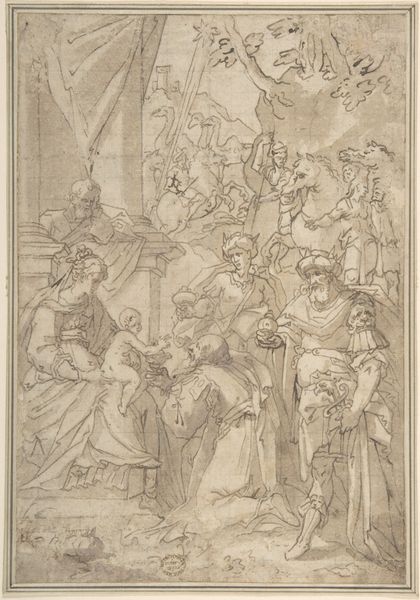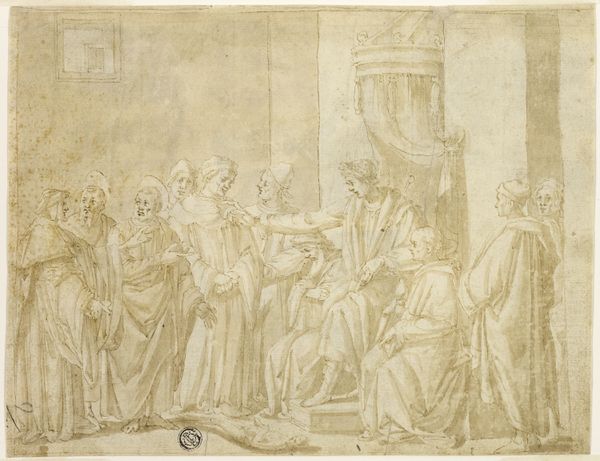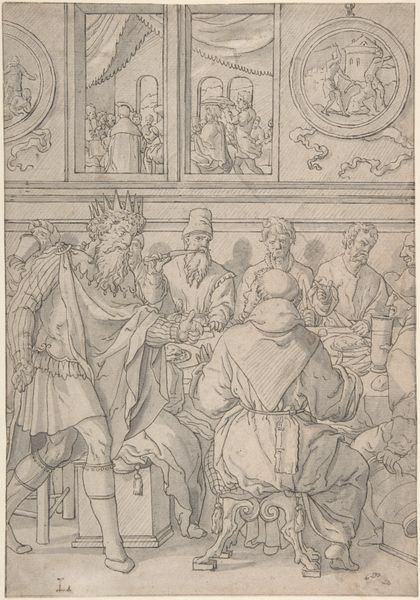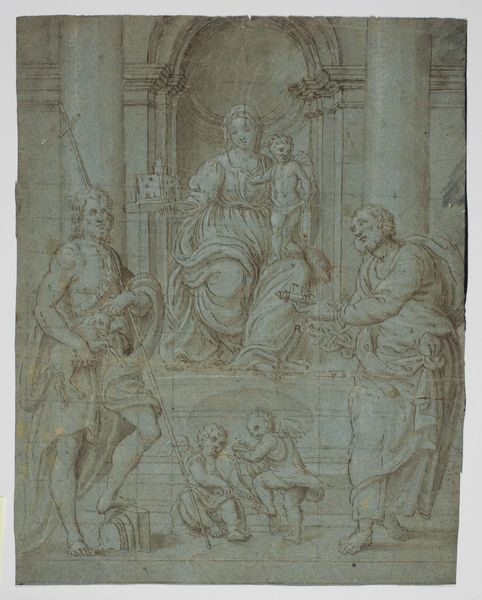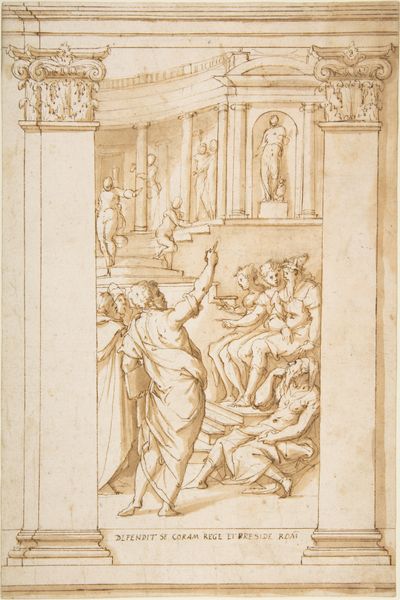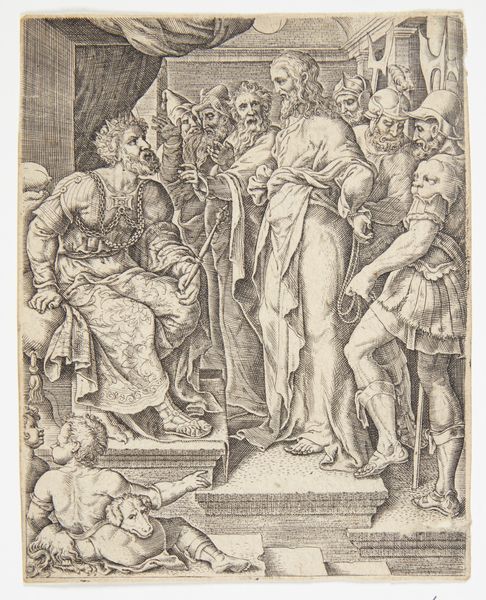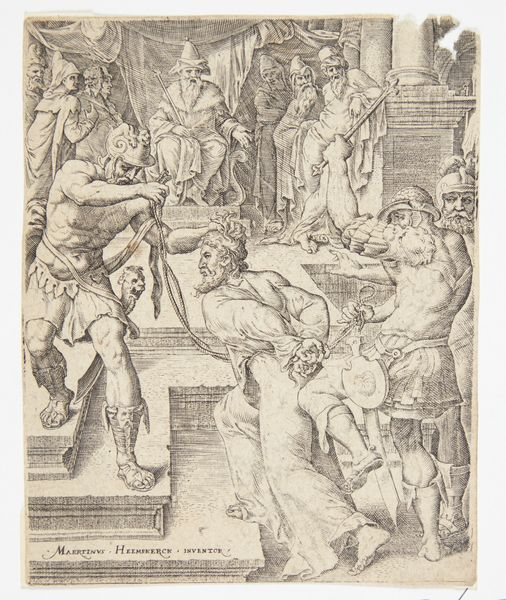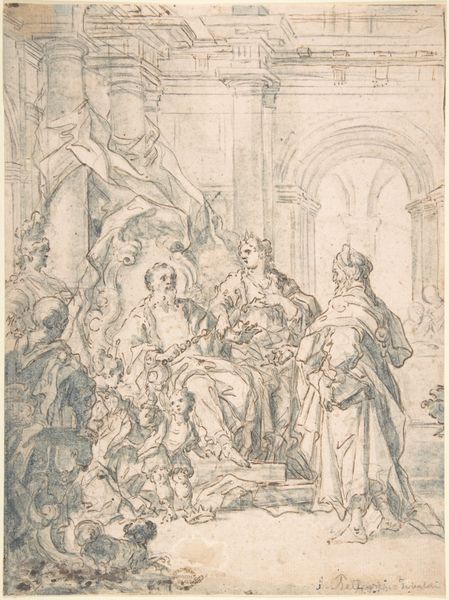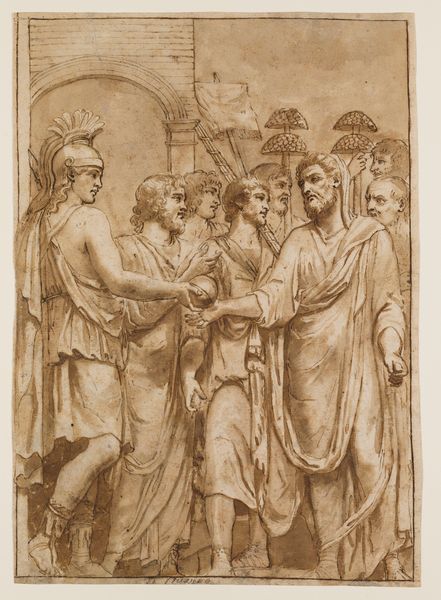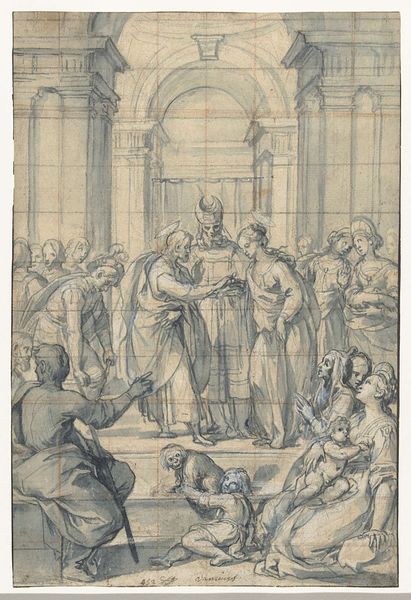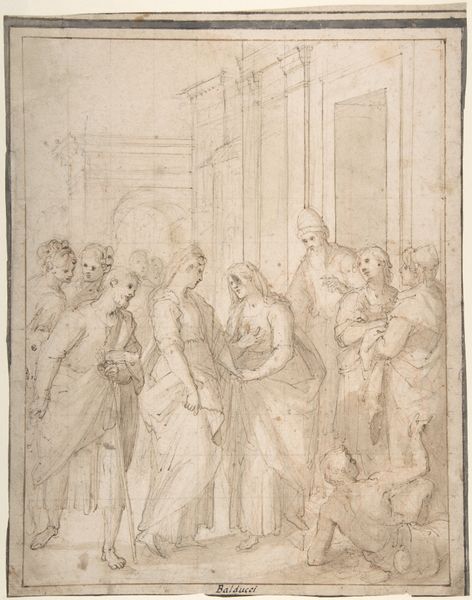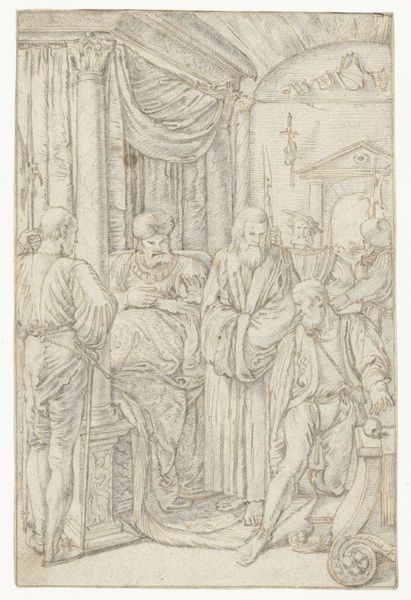
drawing, print, paper, ink, chalk, pen
#
drawing
#
narrative-art
# print
#
pen sketch
#
pencil sketch
#
classical-realism
#
figuration
#
paper
#
11_renaissance
#
ink
#
ink drawing experimentation
#
chalk
#
pen work
#
pen
#
history-painting
#
academic-art
Dimensions: 297 × 211 mm
Copyright: Public Domain
Curator: Standing before us is "Roman Senators and Soldiers," an undated work attributed to Andrea Mantegna, currently held at the Art Institute of Chicago. The medium includes pen, ink, chalk, and paper. Editor: Immediately, I’m struck by the careful articulation of drapery and how that texture contrasts with the stark lines used to render the faces and architectural features. It creates a dynamic surface. Curator: Absolutely. It is interesting how Mantegna positions this classical narrative. Who do we see represented? Clearly the Roman elite but note how this relates to patronage in the Renaissance? The image seems to justify a hierarchy and offers a view into the mindset of wealthy families of the time. Editor: And yet, observe how the composition utilizes a shallow space, compressing the figures almost as if this were a relief sculpture. It creates a feeling of contained power, reinforced by the stoic faces. Curator: Which really emphasizes the political context, right? It’s an image steeped in Roman symbolism, revived during the Italian Renaissance. Power and patriarchy were legitimized by visual signifiers throughout history and up until today. It forces me to ask: what message would this convey to its intended Renaissance audience? Editor: Note also the meticulous use of line to create both form and shadow. The light source seems diffuse, yet the artist coaxes a sense of volume through varied stroke weights and hatching. Look closely at the pen work – it's phenomenal. Curator: Beyond that, consider how Renaissance art was often used to construct and reinforce societal hierarchies. It asks important questions of contemporary power structures in our modern-day context. Who creates and benefits from certain imageries? Editor: You know, the sheer skill displayed here, in terms of rendering perspective and anatomical accuracy, deserves its due recognition, whether one agrees with the depicted ideology or not. Curator: But acknowledging this artistry cannot overshadow the political and ethical questions this work generates. Its very existence reflects a social landscape of inequality and the historical roots of today’s struggle with the dominance of the privileged class. Editor: I see your point. There's always more beneath the surface and to the purely aesthetic. Curator: Indeed, viewing artwork through an intersectional, socially conscious lens enhances, in my opinion, our grasp of historical narrative. Editor: Well, regardless of our slightly differing emphases, I think we can agree there's profound visual detail to explore and unpack here.
Comments
No comments
Be the first to comment and join the conversation on the ultimate creative platform.
